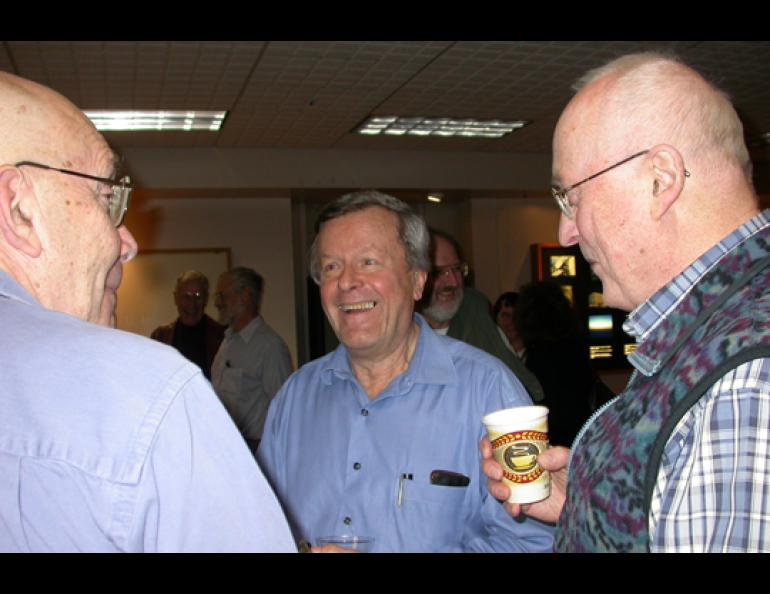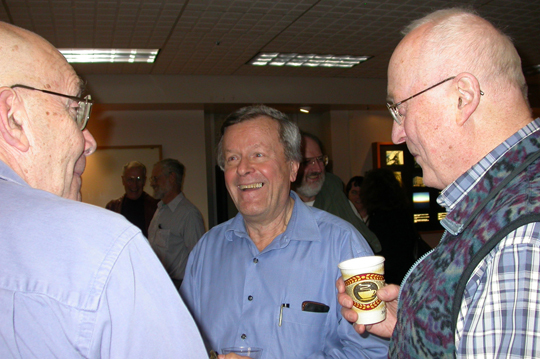
Voice in the wilderness departs for Outback
When I heard that Gunter Weller was retiring after 36 years as a scientist in Alaska, I felt a little glum. Scientists retire all the time, but I think Alaska will have a particularly hard time replacing him.
Weller, director of the University of Alaska’s Center for Global Change and Arctic System Research, began his career in Alaska in the late 1960s as a meteorologist, but he has spend the last decade studying the research of others, combining it with his own knowledge, and spreading the word about warming in the Arctic. A Dutch television crew just interviewed him, marking the sixteenth time he’s appeared on a major television program about global warming. He gave them his stump speech on human-caused warming and its affects on the north.
Before he left to return to his boyhood home of Australia with his wife Sigrid, Weller repeated the speech for me. Following are some excerpts:
“The story is that there is a lot of change that has occurred as has been predicted. Computer models show amplification of this climate signal (warming) highest at high latitudes, including Alaska,” Weller said.
“I feel very comfortable with the computer models. Every nation makes major decisions on the future of economics based on what are pretty poor economic models. And I think the climate models with a lot of physics in them are probably a hell of a lot better than any economic model you care to nominate.”
As for real measurements, “In the Arctic, including Alaska, we’ve seen a temp increase of 2-3 C, close to 5 degrees Fahrenheit, over the last 50 years. It’s a patchy signal, but overall temperatures have increased by 2-3 degrees centigrade. And the winter temperatures are maybe twice as high. And everybody who lives in Alaska knows that winters are warmer than they used to be 30 or 40 years ago.
“But temperature’s not the only indicator. For example, glaciers are melting at a rapid rate, and as glaciers melt water runs off and raises the sea level. Permafrost is beginning to thaw and sea ice is thinner.
“All of these indicators show a warmer climate; that’s just in the physical environment. It’s also in the biological environment, the slow encroaching of shrubs into the Arctic, the movement of treeline slowly but surely north, the movement of animals north, beavers on the Seward Peninsula, robins in Inuit villages, huge outbreaks of the spruce bark beetle.
“Add all this together and there’s a very clear signal that climate has warmed and it has begun to have serious consequences. We could argue whether its natural or (manmade). Of course you have natural influences, such as solar inputs; the solar constant has gone up and contributed perhaps 20 percent to the warming. And volcanic eruptions sometimes cool the planet for very short period. And you have these decadal cycles—North Atlantic Oscillation, Pacific Decadal Oscillation, Arctic Oscillation—where climate fluctuates in 10-year intervals. All of that is perfectly true and all of it contributes to climate change, but if you take it all together, you still can’t explain the observed climate signal, and therefore, it’s almost certain that the remainder is due to (manmade) activity, the greenhouse effect.
“If we trust in computer models as we should, we can only expect these trends to continue: climate will get warmer, more ice and snow will melt, with more influences on animals and plants, and more consequences to people.”
In the second part of Weller’s stump speech he talks about what we can do about all that bad news. I’ll present that half in next week’s column.





